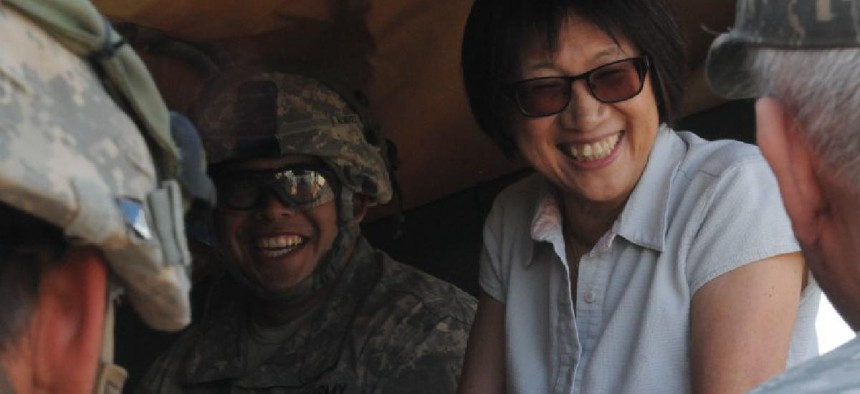DOD could get new software, sustainment tech oversight positions

Heidi Shyu , undersecretary of defense for research and engineering, wants to add new oversight roles for software and sustainment efforts.

Heidi Shyu, shown here in 2015 as the assistant secretary of the Army for Acquisition, Logistics and Technology, is looking to change the way DOD manages software and sustainment costs. (DOD photo by Sgt. Jessica Littlejohn)
The Defense Department's top technology official wants to add new oversight roles for software and sustainment efforts.
Heidi Shyu, the undersecretary of defense for research and engineering, said she's looking to reorganize the office to add leadership roles, including a director of sustainment technologies that would focus on driving down sustainment costs and a director of processing and software to ensure that security is part of the software development process.
"Software has to be affordable and modular and secure," Shyu told reporters Oct. 12 during the Association of the U.S. Army's annual conference in Washington, D.C. "If you buy a piece of equipment, you really want it to be secure. You want to be able to have trust."
Shyu said the goal is to create several key positions that don't yet exist as the office undersecretary for defense of research and engineering looks to revamp its organization chart with a "focus on some of the key, strategic sourcing areas," including open, modular systems that can easily interoperate with one another. The next step would be conferring with the deputy defense secretary to approve the new strategy.
Reducing sustainment costs was a prime point Shyu made to senators during her confirmation hearing in May, noting that developing open, modular architecture was needed for that to happen.
The Pentagon is also looking to do a rapid prototyping experiment with more than 30 different projects in fiscal 2023. The technologies would align with joint warfighting capability gaps identified by the combatant commands in areas such as enhanced communications and indications of warning.
Shyu said the goal is to "quantify the effectiveness of the prototypes and enable rapid transition into operations" and ultimately have operators evaluate whether the technologies are useful. The experiment, which would ideally be annually at the minimum, would include both industry prototypes and those developed with the military services and DOD, the tech chief said.
But funding for the effort is still in limbo as the Congress works to pass defense authorization and spending bills for fiscal 2022. Shyu said the hope is to get some funding for the effort in the fiscal 2022 appropriation to get started, but wouldn't name the figure.
"The amount of money we're looking for, relative to the value it's going to bring, it's pretty small," Shyu said.






